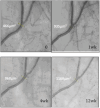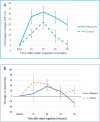Imaging of aqueous outflow in health and glaucoma. Justifying the re-direction of aqueous
- PMID: 38429503
- PMCID: PMC11885811
- DOI: 10.1038/s41433-024-02968-8
Imaging of aqueous outflow in health and glaucoma. Justifying the re-direction of aqueous
Abstract
A wave of less invasive surgical options that target or bypass the conventional aqueous outflow system has been incorporated into routine clinical practice to mitigate surgical risks associated with traditional glaucoma drainage surgery. A blanket surgical approach for open-angle glaucoma is unlikely to achieve the desired IOP reduction in an efficient or economical way. Developing a precise approach to selecting the most appropriate surgical tool for each patient is dependent upon understanding the complexities of the aqueous outflow system and how devices influence aqueous drainage. However, homoeostatic control of aqueous outflow in health and glaucoma remains poorly understood. Emerging imaging techniques have provided an opportunity to study aqueous outflow responses non-invasively in clinic settings. Haemoglobin Video Imaging (HVI) studies have demonstrated different patterns of aqueous outflow within the episcleral venous system in normal and glaucomatous eyes, as well as perioperatively after trabecular bypass surgery. Explanations for aqueous outflow patterns remain speculative until direct correlation with findings from Schlemm's canal and the trabecular meshwork are possible. The redirection of aqueous via targeted stent placement may only be justifiable once the role of the aqueous outflow system in IOP homoeostasis has been defined.
摘要: 为了降低青光眼传统引流术相关的手术风险, 针对或绕过传统房水流出系统的微创手术方案已纳入常规临床实践。一刀切的开角型青光眼手术方法的有效性或达到经济性降眼压的预期效果。为每位患者选择最适合的术式取决于对房水引流系统的复杂性以及设备如何影响房水引流的了解。然而, 人们对健康眼和青光眼患者的房水平衡控制仍然知之甚少。新的眼科成像技术为在临床环境中以非侵入性方式研究房水流出反应提供了机会。血红蛋白视频成像 (HVI) 研究表明, 正常眼和青光眼以及小梁旁路手术后的围手术期, 巩膜外静脉系统中的房水引流模式各不相同。在与Schlemm管和小梁网的研究结果直接相关之前, 对房水引流模式的解释仍是推测性的。只有在明确了房水引流在眼压平衡中的作用后, 通过有针对性的支架置入重新引导房水的流出可能较为合理。.
© 2024. The Author(s).
Conflict of interest statement
Competing interests: The authors declare no competing interests.
Figures







Similar articles
-
The Effects of Trabecular Bypass Surgery on Conventional Aqueous Outflow, Visualized by Hemoglobin Video Imaging.J Glaucoma. 2020 Aug;29(8):656-665. doi: 10.1097/IJG.0000000000001561. J Glaucoma. 2020. PMID: 32773669
-
Morphological and biomechanical analyses of the human healthy and glaucomatous aqueous outflow pathway: Imaging-to-modeling.Comput Methods Programs Biomed. 2023 Jun;236:107485. doi: 10.1016/j.cmpb.2023.107485. Epub 2023 Mar 16. Comput Methods Programs Biomed. 2023. PMID: 37149973 Free PMC article.
-
Trabecular micro-bypass shunt (iStent®): basic science, clinical, and future).Middle East Afr J Ophthalmol. 2015 Jan-Mar;22(1):30-7. doi: 10.4103/0974-9233.148346. Middle East Afr J Ophthalmol. 2015. PMID: 25624671 Free PMC article. Review.
-
Aqueous outflow regulation: Optical coherence tomography implicates pressure-dependent tissue motion.Exp Eye Res. 2017 May;158:171-186. doi: 10.1016/j.exer.2016.06.007. Epub 2016 Jun 11. Exp Eye Res. 2017. PMID: 27302601 Free PMC article. Review.
-
Ab interno Schlemm's canal surgery: trabectome and i-stent.Dev Ophthalmol. 2012;50:125-36. doi: 10.1159/000334794. Epub 2012 Apr 17. Dev Ophthalmol. 2012. PMID: 22517179
References
Publication types
MeSH terms
LinkOut - more resources
Full Text Sources
Medical

